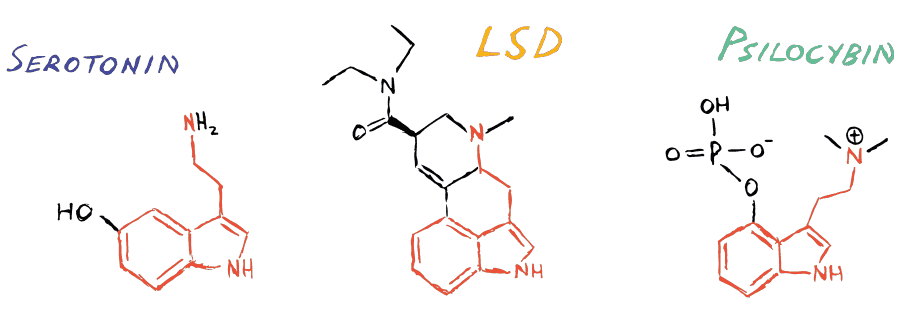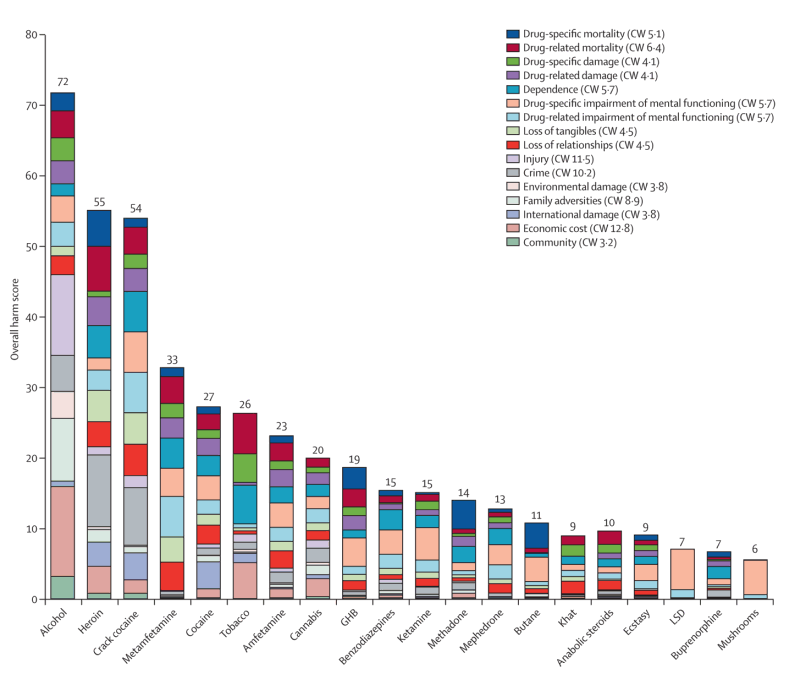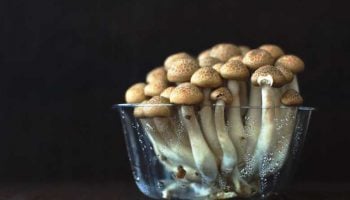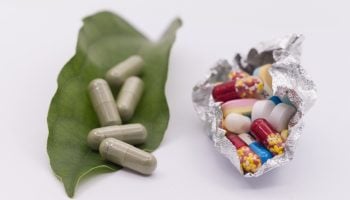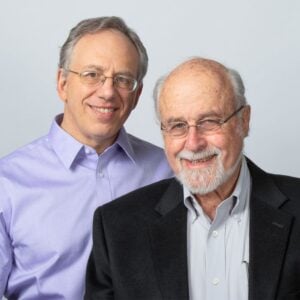The Ultimate Guide to
Microdosing
1P-LSD
Pink Sunshine
1P-LSD is an illegal substance in some places, and we do not encourage or condone the use of this substance where it is against the law. However, we accept that illegal drug use occurs, and believe that offering responsible harm reduction information is imperative to keeping people safe. For that reason, this guide is designed to ensure the safety of those who decide to use this substance.
What Is 1P-LSD Microdosing?
01Sub-perceptual means the effects are subtle, but can have a noticeable influence on your life.
Typically, individuals integrate sub-perceptual doses into their weekly routine. Microdosers often report higher levels of creativity, more energy, increased focus, and improved relational skills.
Many people microdose in order to treat depression or anxiety, with often remarkable results.
Some enthusiasts also report microdosing helps to heighten spiritual awareness and enhance all five senses.
The History Of Microdosing
While the modern history of psychedelics reaches back to the 1950s, interest in microdosing saw a major revitalization with the publishing of Dr. James Fadiman’s The Psychedelic Explorer’s Guide: Safe, Therapeutic, and Sacred Journeys in 2011.
Dr. Fadiman’s book explores microdosing as a subculture of psychedelic use. While a number of indigenous cultures, as well as modern professionals, have utilized microdosing as a way to unlock a host of benefits, Dr. Fadiman’s book formally introduced the term “microdosing” into the psychedelic mainstream.
But Dr. Fadiman’s book didn’t just contribute a piece of terminology; it awakened the curiosity and imaginations of millions of people fascinated by the reports of experienced microdosers. It also provided a host of practical information for anyone that wanted to give it a try, much of which has been integrated into this course.
Dr. Fadiman’s ongoing research into microdosing serves as one of the few modern studies into the effects of microdosing specifically (most other research deals with larger doses for specific therapeutic outcomes).
Following the publication of The Psychedelic Explorer’s Guide, the next major boost in the public’s awareness of microdosing came from a podcast interview Dr. Fadiman gave with Tim Ferriss in March of 2015.
Ferriss, who rose to fame after authoring the bestseller “The Four Hour Work Week,” has an enormous audience of individuals interested in entrepreneurship, “biohacking,” self-experimentation, psychology, spirituality, and an array of additional subject matters that would predispose them to an interest in the benefits of microdosing.
His podcast interview with Dr. Fadiman blasted the core messages about microdosing contained in The Psychedelic Explorer’s Guide from a soapbox loud enough to significantly increase a basic awareness of the concept.
Soon after its air date, listeners of Ferriss’ podcast were not only starting to experiment with microdosing on their own; they were discussing it and sharing their curiosity with their own personal networks. Consequently, journalists began writing articles about microdosing, leading to even greater awareness and interest.
The most recent source of interest in microdosing came from Ayelet Waldman’s book “A Really Good Day: How Microdosing Made a Mega Difference in my Mood, My Marriage, and My Life,” published in February of 2016.
Waldman’s book discusses her 30 day protocol of microdosing with LSD to address a variety of psychological symptoms primarily caused by hormonal changes related to menopause.
Prior to microdosing, Waldman’s mood swings had become so severe as to put her marriage and relationship with her children at risk.
Afterwards, in an interview with Third Wave, she said, “This month changed my life, and I am sad every day that I can’t keep doing it legally.”
Now, tens of thousands of people around the globe are being turned on to microdosing – whether it’s for treating mental health problems, boosting creativity, or giving entrepreneurs new directions.
Everything you need to know about Microdosing in one place
Download our FREE guide to learn how to begin a microdosing regimen, calibrate your dose level, and get the most out of your experience.
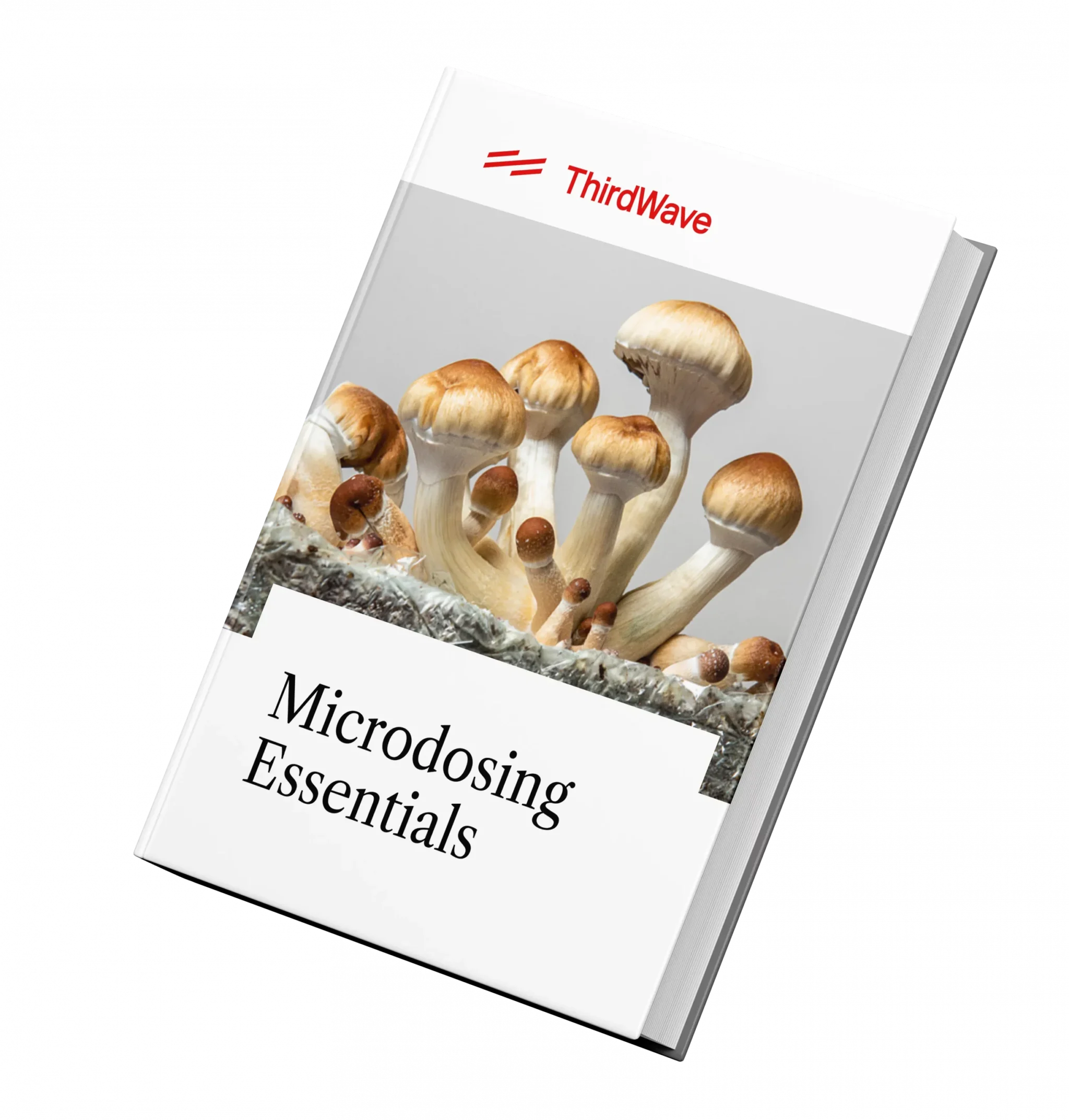
“This FREE Guide was just what I needed to take the first step into Microdosing. AND IT WAS THE BEST DECISION OF MY LIFE! After starting my microdosing regiment I now have more focus, energy and clarity into what it is I truly want in this world.”
James, New York
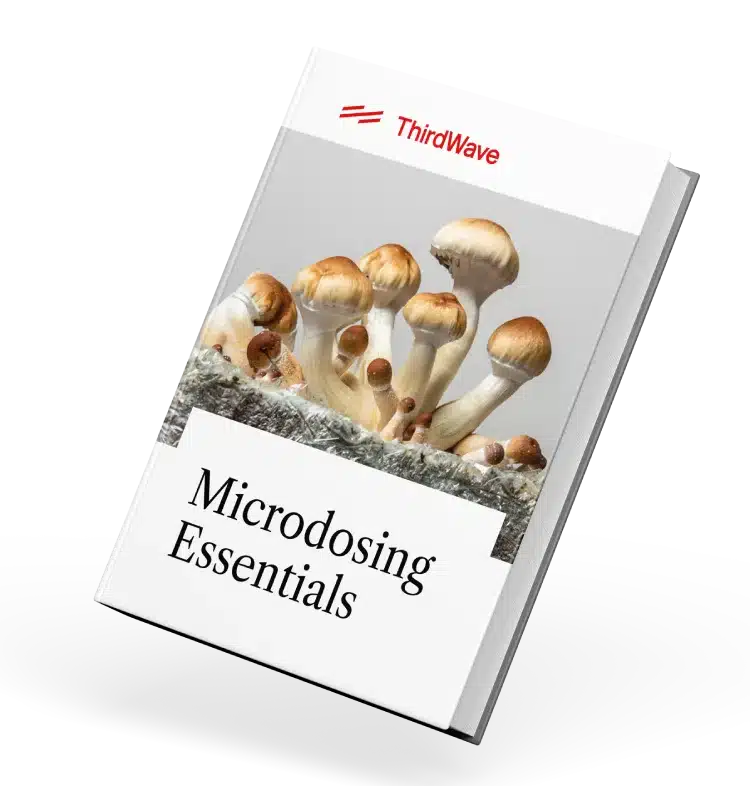
Everything you need to know about Microdosing in one place
Download our FREE guide to learn how to begin a microdosing regimen, calibrate your dose level, and get the most out of your experience.
The Science of 1P-LSD Microdosing
02Although almost no research has been done on microdosing specifically, we know something about what large doses of psychedelics do to the brain.
Much of what we understand about how psychedelics work involves serotonin, a chemical that keeps our brains ticking. It is one of the most important neurotransmitters in the brain, and affects nearly everything we do, from how we feel to how we process information.
Classic psychedelics such as LSD and Psilocybin share a similar structure to serotonin, and work along a similar pathway…
Many antidepressants (called Selective Serotonin Reuptake Inhibitors, or SSRIs) try to make serotonin more plentiful in the brain to make you feel better.
Psychedelics work more directly, by mimicking serotonin. This means that one of their main effects is to stimulate a serotonin receptor, located in the prefrontal cortex, called “5-HT2A.”
The stimulation of the 5-HT2A receptor leads to two very important results:
- The production of “Brain Derived Neurotrophic Factor” (BDNF). BDNF is “like Miracle-Gro for your brain. It stimulates growth, connections, and activity.” [1]
- The increased transmission of “Glutamate.” Glutamate is the neurotransmitter most responsible for brain functions like cognition, learning, and memory. [2]
Glutamate and BDNF work together in ways we’re still understanding, but it’s become clear that having more of each leads to many of the benefits we all seek from microdosing. [3]
And, while research is especially limited when it comes to microdosing 1P-LSD, it is known to act as a serotonergic hallucinogen, or classical psychedelic, just like LSD. In other words, it produces effects mainly via the serotonin system, and in particular by activation of this same 5-HT2A receptor. [4]
1P-LSD is subjectively similar to LSD as well, with many users finding the effects to be practically the same. Chemically, the only difference between the two is that 1P-LSD has a small propionyl group bonded to the 1-position of LSD’s indole ring. [5]
It may even be that 1P-LSD is a “prodrug” of LSD, losing the 1P- group in the body and actually converting into LSD proper. According to David Nichols, it is otherwise unclear how the propionyl group would allow the molecule to bind to the 5-HT2A receptor and produce any psychoactive effects. [6]
Another thing psychedelics do is to cause parts of the brain that might not usually communicate with one another… to communicate with one another!
Psychedelics allow these unique connections to be formed by dampening the activity of an often over-used part of our brain called the “Default Mode Network” (DMN). [7]
The Default Mode Network is an area of the brain used for an array of different mental activities, including day-dreaming, self-reflection, and thinking about the past or the future. Some studies suggest that depression is linked to an overactive DMN. [8] It’s possible that a highly active DMN causes us to ruminate, over-analyze ourselves, and step out of the present moment to constantly question the past and the future.
This helps explain why these substances could be used to combat depression and anxiety, and also lead to insights and creative perspectives that otherwise remain inaccessible to us.
Flow States
All of us, at some point in our lives, have experienced a flow state. The surfer effortlessly riding a big wave, the therapist perfectly in-sync with her client, the salesman working the room in an out of body experience… all are examples of people performing at their best while in flow.
Simply put, flow is truly one of the great experiences of being human.
We have no specific, non-anecdotal evidence to suggest that microdoses of psychedelics can induce flow states – but we know that moderate doses can change the function of the brain in a way very similar to that seen in flow states.
Studies show that moderate doses of psychedelics cause brain waves to shift more towards alpha oscillations, which is also seen in the transition to a flow state. [9]
Psychedelics imitate the neurotransmitter serotonin when they enter the brain – and we know that serotonin is found in higher levels in flow states. Similarly, psychedelics increase the levels of dopamine in the brain, [10] another neurotransmitter which is found in higher levels in flow states.
Perhaps most importantly, psychedelics’ ability to dampen down the DMN can allow our brains to make unique connections between areas that don’t usually communicate. [7] This is crucial for allowing flow states to occur.
Since we know that moderate doses of psychedelics can induce similar effects to a flow state in the brain, it seems likely that a regular microdosing regimen will start to shift our awareness in the direction of flow.
How Do You Microdose With 1P-LSD?
031P-LSD itself is possibly less potent than LSD – delivering just 38% of its cousin’s strength, according to testing on mice. [5] However, this may not be a reliable indicator of 1P-LSD’s strength in humans, and many people report that 1P-LSD and LSD have similar subjective strength.
In practice, you may need to take slightly more 1P-LSD than LSD for the same effects. Hence one user, citing personal correspondence with Jim Fadiman, recommends a starting dose of 15 micrograms (as opposed to 10). [11] This can then be adjusted up or down as required to reach your own ‘sub-perceptual’ level.
Like LSD, 1P-LSD is most commonly available on blotter paper, with each square tab typically containing 100-125 micrograms. Less common preparations include powder, pellets, or liquid suspensions.
When microdosing with 1P-LSD on blotter paper, there are two methods to prepare a microdose: cutting or volumetric.
The cutting method is exactly what it sounds like: cutting the blotter paper with an Exacto knife or scissors.
One drawback to this method is a potential lack of precision arising during the process of ‘laying’ the 1P-LSD – whereby a liquid suspension is applied across a sheet of blotter paper. If your 1P-LSD has somehow been laid unevenly, the cutting method will leave you with a degree of variation between microdoses that could otherwise be avoided.
The volumetric method is often preferable, since it helps to get around any variation in how a tab is laid or cut. This method involves submerging a full tab into distilled water or alcohol and taking small, measured quantities of the solution in a syringe to microdose. Volumetric microdosing requires some calculations and careful measurements, but will generally give a more accurate, consistent dose.
For the standard volumetric method, all you need to do is drop a 100 microgram tab into 10ml of distilled water or vodka, and leave it for a day or so in the dark. With these figures, 1ml of the solution should contain a reliable 10 microgram dose of 1P-LSD. And you can store this solution in the fridge for several months, as long as the container is sterile.
Read our full guide on volumetric microdosing to learn more.
There is some disagreement in the microdosing community over whether it’s necessary to remove the tab after soaking. Some people find it attracts mold (if using distilled water), while others have even suggested the tabs might leach 1P-LSD back out of the solution, affecting the concentration of each dose.
In any case, a more controlled method of preparation would be to split your distilled water or vodka into thirds and soak your tab for three hours in each, decanting them into a sterile bottle for storage and finally disposing of the paper tab entirely. [12]
What Schedule Should I Follow?
Dr. James Fadiman, the author of the Psychedelic Explorer’s Guide, recommends taking a microdose once every three days.
Take a microdose on Day 1. Then do NOT take a microdose on Day 2 or Day 3.
Then, take another microdose on Day 4.
Observe the effects throughout this process by taking notes in a journal every day.
Continue the process of microdosing two times per week for several weeks. Take notes throughout the entire process on both short-term, in-the-moment effects, and long-term changes in your mood, energy, and social behavior.
Follow your usual routine while microdosing. You should not change what you do. The purpose is to enhance your day-to-day existence by integrating microdoses into your routine.
When you try microdosing for the first time, take a day off from work and social commitments. It will give you a chance to observe and notice any unusual effects before microdosing in a more public situation.
Be vigilant in observing the effects of microdosing on the two days between microdoses. Many people perceive increased feelings of flow, creativity, and energy the day after they microdose, as well as the day of microdosing.
Microdosing 1P-LSD every day is not recommended. Psychedelics like 1P-LSD produce a tolerance, even with microdoses, so you might see diminishing returns after a few days. This is why Dr. Fadiman suggested leaving a couple of days between each dose.
Concern for your health is another reason to avoid microdosing every day. There is a potential heart risk of taking too many psychedelics over a long period of time. Although we don’t know how this translates when it comes to microdosing, it’s probably best to err on the side of caution, and avoid microdosing too frequently, or for longer than a few months at a time.
One other downside to microdosing every day is normalizing a very potent substance. You can compare it to the use of coffee for productivity purposes. When you drink coffee every day, over time you need to increase the dose to get the same effect. One cup of coffee turns into two or three or four cups of coffee within 2-3 months.
It is best to leverage microdosing as an occasional advantage, rather than a consistent go-to like coffee.
For an extensive guide on how to get started with microdosing, and create a protocol that gets the most out of your experience, sign up to our Microdosing Course now!
Everything you need to know about Microdosing in one place
Download our FREE guide to learn how to begin a microdosing regimen, calibrate your dose level, and get the most out of your experience.

“This FREE Guide was just what I needed to take the first step into Microdosing. AND IT WAS THE BEST DECISION OF MY LIFE! After starting my microdosing regiment I now have more focus, energy and clarity into what it is I truly want in this world.”
James, New York

Everything you need to know about Microdosing in one place
Download our FREE guide to learn how to begin a microdosing regimen, calibrate your dose level, and get the most out of your experience.
Benefits and Risks
041: To reduce the frequency and intensity of undesirable states caused by various forms of “mental illness”, including:
- Depression
- Anxiety (i.e. Generalized or Social)
- ADD/ADHD
- Mood disorders
- PTSD
- Addiction
2: To increase the frequency and intensity of desirable states/outcomes:
- Creativity
- Energy
- Flow states
- Productivity/focus
- Improved relationships/increased empathy
- Athletic coordination
- Leadership development
Undesirable States
We’re not fond of the term “Mental Illness” because it pathologizes what is often a part of one’s natural progression towards a more coherent, actualized self.
But for those struggling with depression, anxiety, PTSD, ADD/ADHD, mood disorders and/or addiction (to name a few), microdosing can create a number of positive changes.
Clinical research has shown that larger doses of psychedelics are effective at treating depression, anxiety and addiction. Anecdotal evidence backs up the idea that a regular microdosing regimen can also have healing benefits for sufferers of various mental health conditions:
“Microdosing doesn’t allow me to be anywhere else but in the present moment. This has helped me tremendously with my anxiety and depression. I am incapable of worrying about what’s going to happen next week, tomorrow, or even five minutes from now. I can function without anxiety for the first time in years. I feel that my attention span is greater, I’m concentrating like never before. When I was suffering with pain I was given a lot of prescription pain pills and was quickly becoming addicted to them. Microdosing instantly helped me stop taking the several pills a day I was taking just so I could get out of bed, and I haven’t touched them since.”
– Third Wave Survey Respondent
“I have fought depression for some 6-7 years since adolescence, microdosing has, so far, consistently helped me get on with my day-to-day, just as much on no MD days as MD days. This also applies to Social & General Anxiety which has been less severe but experienced for the same period.”
– Third Wave Survey Respondent
“I overcame my depression with microdosing because I can consistently be productive and happy with it as a creative booster. It also eliminates any anxiety I get because I never used to raise my hand in class. I smoke a lot of cannabis and it’s unhealthy to overindulge. I found microdosing to make me feel the need to be productive so I smoke much less when I microdose and don’t indulge just to smoke.”
– Third Wave Survey Respondent
Are you feeling drawn to work with plant medicines? Third Wave’s vetted Psychedelic Directory offers an honest, in-depth guide to safely accessing these substances.
Desirable States
Many people are microdosing in an effort of self-improvement or personal development. Reports suggest that microdosing can improve creativity, productivity and energy, which can be used at work or in other pursuits.
The creative benefits of microdosing are highly linked to the enhancement of flow states. Since microdosing allows you to enter into a flow state with greater ease, this allows people to explore new and exciting forms of consciousness.
Listen to our podcast episode with Janet Chang talking about: Is Microdosing Right For You? This Entrepreneur’s Experiment May Help You Decide or Click here to read the transcript
Countless people microdose to help them solve work-related problems, create new concepts, or simply to reduce procrastination.
Microdosing can also help you outside of the work environment, by improving your social interaction skills, athletic performance and spiritual awareness.
“Since microdosing I have come out of my shell. I have become more confident around other people and have formed an intimate relationship with another person where I have had difficulty in the past.”
– Third Wave Survey Respondent
“Microdosing LSD has been a very positive experience – it keeps me very present, focused, creative, and overall induces a deep sense of contentment! I found that taking it before going to my parents place made the family dynamic so much more enjoyable. It also has been great in terms of connecting with my partner.”
– Third Wave Survey Respondent
Getting the most out of microdosing is really important – and depending on the reason you’re microdosing, you’ll need to prepare and integrate appropriately. Our extensive microdosing course will guide you through the various protocols for getting the most out of microdosing, specific to your needs.
Risks
By far the riskiest thing about microdosing is usually the law – so it’s crucial to check local regulations before using 1P-LSD.
While not federally controlled in the United States, a case could be made that 1P-LSD comes under the Federal Analogue Act – at least when sold or possessed for human consumption – as an illegal analog of LSD. A similar amendment regarding tryptamine derivatives applies in Latvia. However, in neither country have we heard of prosecutions for 1P-LSD. [5]
In the UK, 1P-LSD is banned under the Psychoactive Substances Act – even though (as David Nichols suggested) the molecule itself may be non-psychoactive until metabolized into LSD. [5] But, again, we haven’t heard of any prosecutions for 1P-LSD possession since the act was passed.
Elsewhere in Europe, the drug is illegal in a growing number of countries, some of which (including Sweden and Switzerland) have specifically banned it by name. Some notable exceptions at the time of writing include Germany and the Netherlands, [5] where many of the remaining online vendors are based.
1P-LSD is also reportedly legal in Canada.
Generally speaking, if there exists no specific ban of the drug in your country (and no bans of LSD analogs or “psychoactive substances” either), then 1P-LSD is probably legal to buy and possess. Always be sure to check though; we never recommend illegal activity.
Aside from the legal risks, microdosing tends to be well tolerated as a safe, non-threatening introduction to the benefits of psychedelics. Of course, it’s impossible to guarantee its safety for every user – especially this early on; 1P-LSD only appeared on the research chemical (RC) market in January 2015, [4] and its precise origin remains unknown. However, given anecdotal reports and its chemical likeness to LSD, the risks are likely comparable.
Given the tremendous safety record of LSD, microdosing 1P-LSD – especially with such small amounts – appears to be a safe and measurable way to explore the incredible possibilities that psychedelics have to offer.
As can be seen by the below chart comparing the relative harms of common substances, LSD is one of the safest substances you can find, biochemically and socially speaking. It’s much safer than alcohol!
Having said that, psychedelics are powerful substances and even microdoses have a risk potential.
Emotional turbulence or anxiety is possible while microdosing, largely due to psychedelics’ ‘amplifying effect’. LSD, for instance, tends to amplify your current mood, rather than act as a stimulant or numbing agent. For this reason, it is important to assess your mindset before consuming a microdose of 1P-LSD.
Since, like LSD, 1P-LSD has the potential to amplify your current mind state, we recommend discussing the risks with your physician if you suffer from psychosis, schizophrenia or severe anxiety, before you decide to begin microdosing. When overdone, microdosing can lead to manic states, which could exacerbate underlying conditions.
Since there is no clinical research on the safety of microdosing 1P-LSD, it’s best to avoid doing so for extended periods of time (longer than a few months). There is a potential heart risk associated with taking too many large doses of psychedelics over a long period of time – although we don’t know how this translates to microdosing.
How Do I Acquire 1P-LSD For Microdosing?
05Although it may be more expensive, one of the key advantages of 1P-LSD over LSD is the relatively consistent purity and quality. The actual dosage of a given batch of LSD can be substantially lower than advertised. And, on occasion, it may not even be LSD at all, which makes reagent testing a practical necessity. 1P-LSD, on the other hand, is far less likely to be missold – although it too can be verified with a reagent test.
Note – if you are using Ehrlich’s reagent to test your 1P-LSD, you may have to wait up to half an hour to see a result, and it may be fainter than you’re used to. This is because the reagent in Ehrlich’s binds to the same part of the molecule where the propionyl group is, so it needs to compete for the same space.
FAQ
06Can 1P-LSD be detected in a drug test?
Given its pharmacological similarities to LSD, and its likely function as a prodrug of it, 1P-LSD is likely to trigger relevant drug tests in exactly the same way. However, LSD tends not to be included in standard drug tests and is only sometimes tested for in extended screens. [13]
As with LSD, excretion through urine reaches a peak about 4 to 6 hours after administering a dose in humans, but even then, the amounts are quite small. There are four known major metabolites of LSD in humans that are excreted and can be detected in urine for up to 4 to 5 days after ingestion, with observed inter-individual variation.
There are several criteria that determine how long LSD can be detected in the body:
- the test being used;
- the detection limit placed on the test;
- the point of collection;
- the type of sample fluid;
- the amount that was ingested.
The average time LSD can be detected in blood is 6-12 hours and in urine is 2-4 days. However, one metabolite (2-oxo-3-hydroxy-LSD) is typically present in higher concentrations and can be detected for longer periods of time in urine.
Tests for LSD (but not its metabolites) in hair samples are also available and they’re good for detecting both low doses and single uses, apparently for an underdetermined but long period of time after dosing.
However, for now, it is not typically included in standard drug screens.
Do I have real 1P-LSD?
1P-LSD is less likely than LSD to be substituted with another substance, but always do your research on the reputation of vendors before making a purchase.
Depending on the dose and route of ingestion, 1P-LSD should take 20 minutes to 2 hours to kick in. The whole experience can last 8-12 hours. [5]
If you feel any other effects, or your experience lasts considerably longer than 12 hours, you may not have taken 1P-LSD. If your blotter paper had a bitter taste, or numbed your tongue, it may have contained NBOMe or DOx.
Note – if you are using Ehrlich’s reagent to test your 1P-LSD, you may have to wait up to half an hour to see a result, and it may be fainter than you’re used to. This is because the reagent in Ehrlich’s binds to the same part of the molecule where the propionyl group is, so it needs to compete for the same space.
Where can I get 1P-LSD?
See our section on acquiring 1P-LSD for microdosing.
Is microdosing illegal?
Microdosing is not necessarily illegal. 1P-LSD remains legal in several countries. See the risks section above for more details.
Is microdosing safe?
The riskiest thing about microdosing is its potentially illegal nature. Always be aware of your local laws and don’t undertake any illegal activities.
There are no clinical research studies on microdosing in humans. However, clinical studies of larger doses of LSD and psilocybin mushrooms have shown that these substances are extremely safe.
What remains an unknown is what effects frequent microdosing could have on the body. This is why we recommend microdosing for no longer than a few months at a time.
One thing is for certain – with microdosing, there is no risk of having a “bad trip” or experiencing intense psychedelic effects. Taking a microdose is the ideal way to be introduced to psychedelics safely and comfortably.
How do I get started with microdosing?
There are lots of things to cover before you get started with microdosing – depending on the reasons you’re interested in the first place!
Sign up to our extensive microdosing course to gain access to curated materials that will help you design the ideal microdosing regimen for your needs. You’ll also gain access to an exclusive community of enthusiastic, helpful microdosers!
Footnotes
07[1] Waldman, A. (2017). A Really Good Day: How Microdosing Made a Mega Difference in My Mood, My Marriage, and My Life. New York: Anchor Books.
[2] Riedel, G., Platt, B., Micheau, J.(2003). Glutamate receptor function in learning and memory. Behavioural Brain Research, 140(1-2):1-47. doi:10.1016/S0166-4328(02)00272-3
[3] Vollenweider, F. X., Kometer, M. (2010). The neurobiology of psychedelic drugs: implications for the treatment of mood disorders. Nature Reviews Neuroscience, 11:642-651. doi:10.1038/nrn2884
[4] Brandt, et al. (2016). Return of the lysergamides. Part I: Analytical and behavioural characterization of 1-propionyl-d-lysergic acid diethylamide (1P-LSD). Drug Testing and Analysis, 8(9):891-902. doi.org/10.1002/dta.1884
[5] PsychonautWiki. 1P-LSD. Retrieved from https://psychonautwiki.org/wiki/1P-LSD.
[6] kman1898 (2015, 16 Feb). The Big & Dandy 1P-LSD Thread, Volume 1 #92 [Online forum comment]. Message posted to https://www.bluelight.org/vb/threads/745848?p=12880348&viewfull=1#post12880348.
[7] Carhart-Harris, R. L., et al. (2016). Neural correlates of the LSD experience revealed by multimodal neuroimaging. National Academy of Sciences, 113(17):4853-4858. doi:10.1073/pnas.1518377113
[8] Sambataro, F., Wolf, N. D., Pennuto, M., Vasic, N. (2014). Revisiting default mode network function in major depression: evidence for disrupted subsystem connectivity. Psychological Medicine, 44(10):2041-2051. doi:10.1017/S0033291713002596
[9] Kometer, M., Schmidt, A., Jäncke, L., Vollenweider, F. X. (2013). Activation of serotonin 2A receptors underlies the psilocybin-induced effects on α oscillations, N170 visual-evoked potentials, and visual hallucinations. The Journal of Neuroscience, 33(25):10544-51. doi:10.1523/JNEUROSCI.3007-12.2013
[10] Nichols, D. E. (2016). Pharmacological Reviews, 68(2):264-355. doi:10.1124/pr.115.011478
[11] GRIZZLYhodl. Regular old LSD vs 1P-LSD, thoughts? Anyone done a side by side comparison? [Online forum comment]. Message posted to https://www.reddit.com/r/microdosing/comments/6nkf3d/regular_old_lsd_vs_1plsd_thoughts_anyone_done_a/dka741v/.
[12] mammalian. 1P-LSD not dissolving properly in alcohol [Online forum comment]. Message posted to https://www.reddit.com/r/microdosing/comments/76mkd9/1plsd_not_dissolving_properly_in_alcohol/dofg5qu/.
[13] Erowid. (2015, Feb 10). LSD Drug Testing. Retrieved from https://www.erowid.org/chemicals/lsd/lsd_testing.shtml.
Everything you need to know about Microdosing in one place
Download our FREE guide to learn how to begin a microdosing regimen, calibrate your dose level, and get the most out of your experience.

“This FREE Guide was just what I needed to take the first step into Microdosing. AND IT WAS THE BEST DECISION OF MY LIFE! After starting my microdosing regiment I now have more focus, energy and clarity into what it is I truly want in this world.”
James, New York

Everything you need to know about Microdosing in one place
Download our FREE guide to learn how to begin a microdosing regimen, calibrate your dose level, and get the most out of your experience.
